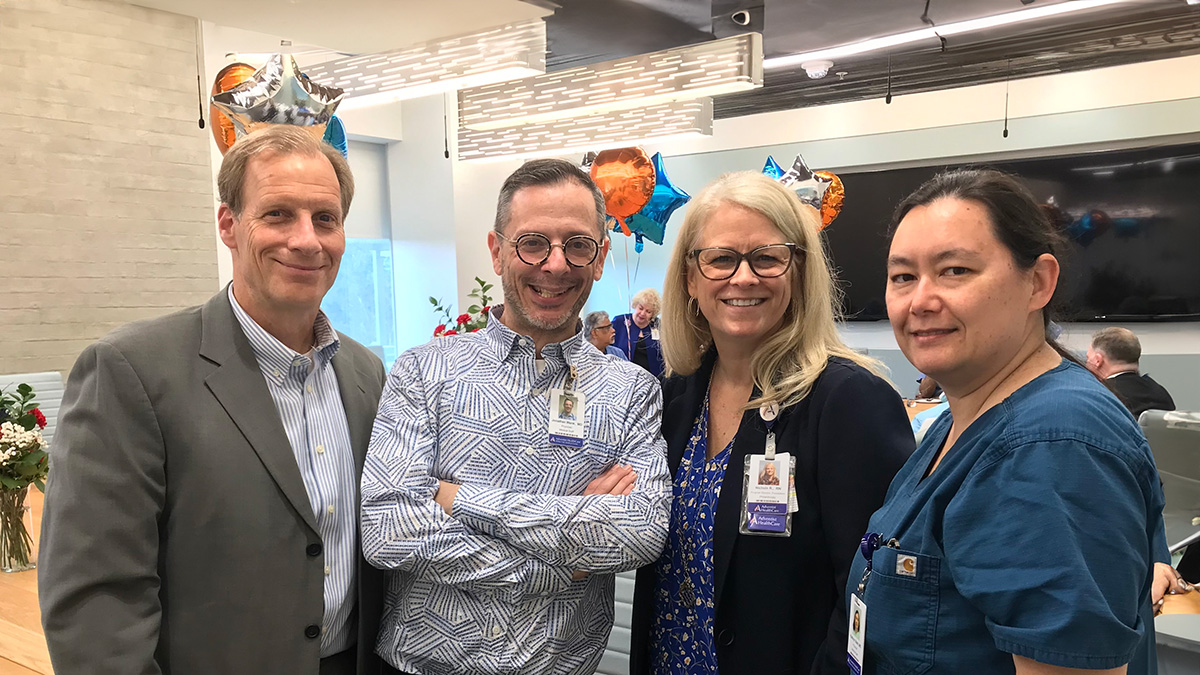“The good physician treats the disease; the great physician treats the patient who has the disease.”
― Sir William Osler
Introduction
Dr. Roberta lights up a room when she walks in.
She immediately puts her patients at ease with a warm smile, kind caring eyes and often, a gentle touch on the shoulder[1] to create that initial bond within the first thirty seconds of meeting her patients. She scores highly on her clinical measures and on HCAHPS (patient satisfaction) surveys.
Then, she and her team were part of an insulin dosage error regarding one of her patients, a 74-year old grandmother admitted with diabetes and multiple co-morbidities.
All was going smoothly for both Grandma and Dr. Roberta when on the second night of care, Dr. Caniggia (the nocturnist-Hospitalist colleague of Dr. Roberta) prescribed a dosage of 7 units of insulin. Then, morning shift changed and Dr. Roberta returned.
Dr. Roberta’s patient load was high that morning. There were multiple urgent requests of her from nurses and physicians about different patients’ needs. She had to quickly read through several patient charts. Then she read the medication order for Grandma.
Reading the order as “70 units of insulin”, Dr. Roberta sensed something didn’t make sense. She recognized this might be an error. She was under time pressure. Instead of reviewing the chart in more depth, or seeking further input by asking the nurse or the pharmacist, she thought, “This is too much. Let’s cut this in half.” So, 35 units of insulin were ordered and administered to the patient – five times the correct dosage. As expected, the patient started developing a hypoglycemic crisis. At this moment, Grandma was at risk for tremors, palpitations, diaphoresis, confusion, dizziness and even coma.
One of the bedside caregivers noticed the changes in Grandma’s clinical status and scrambled to treat her. Calling for help from colleagues, the care team had to act fast. In the intensity of the moment, they couldn’t explain in real-time to the family everything that was taking place. So they said, “We have to urgently treat your loved one now. We’ll explain later.” The family was scared, but they waited for a more detailed explanation.
Fortunately for Grandma and her family, the clinical care team caught signs of hypoglycemia early enough, and were able to treat the patient rapidly and no harm was done…this time.
Once the situation was well-controlled, the care team explained gently and honestly to the family that they had made a medication dosage error[2]. This is a critical part of the story because here is where things can go horribly wrong, or they can go better than expected. The family had dozens of questions about their loved one and the care team. Dr. Roberta took her time to answer each question.
Because Dr. Roberta had built up such a strong relationship with that patient and the family from the very first interaction, the family understood and retained their trust in Dr. Roberta. They felt:
- They were treated with courtesy and respect from the moment Dr. Roberta met them
- They were listened to
- They received detailed explanations about Grandma’s condition and follow up plan.
Due to Dr. Roberta developing a strong patient-physician relationship from the outset, the family did not feel the need to seek further administrative or legal remediation.
The healthy rapport that Dr. Roberta established with Grandma early on in the relationship (within the first thirty seconds) paid off later…and served as an alternative insurance policy. When looking at the data, studies show that within seconds of meeting someone (in this case, a patient meeting a doctor), based on a single observed physical trait or behavior, people will assume to know things about you, (as explained in the 2003 book Social Psychology by H. Andrew Michener, John D. Delamater and Daniel J Myers). Furthermore, according to research by Dr. Albert Mehrabian of UCLA, appearance and body language accounts for fifty-five percent of an invaluable first impression. [3]
To reduce the risk of malpractice and to provide a stellar patient experience, physicians should create a great first impression with patients. It’s easy to do and does NOT take a lot of extra time.
Dr. Roberta creates a safe ambiance by sitting down and being fully present and thus emotionally attractive. Then she asks something non-medical about the patient (“So, where are you from originally?”) and listens to the patient completely, without interruption. She follows Osler’s advice and gets to know the person she is going to treat. Only then, she engages the patient in a clinical discussion about their condition.
Dr. Roberta loves providing great care at the bedside. After Grandma was discharged and the family was OK, Dr. Roberta went home that night and cried – tears of shock, guilt, shame…and relief. She felt horribly about what happened. She understands what’s on the line for her patients and for her.
She knows she has to take care of herself physically and mentally, especially after moments like these. She taps into her organization’s wellness resources and works with an external coach provided by her organization.
We’ve heard Ben Franklin’s old adage that, “An ounce of prevention is worth a pound of cure.” For caregivers, creating great first impressions with patients and their families is worth the peace of mind gained from not having to deal with being named in a lawsuit.
[1] Source: “Influence of a ‘Warm Touch’ Support…” Psychosomatic Medicine. Julianne Holt-Lunstad, https://pdfs.semanticscholar.org/1802/c19b1e7fb2e3a61966e37101c9ed0b329c32.pdf
[2] Note: For optimal patient care, check with your own teams – clinical care and legal teams – and the “I’m sorry” laws in your state for how to appropriately address patient care errors at your site.
[3] Source: How to Make a Great First Impression by Jamal and Judith Lindenberger https://www.academia.edu/19181202/How_to_Make_a_Great_First_Impression

James McKenna
James McKenna is a well-known, trusted executive coach with a proven track record of optimizing performance (both individual, as well as organizational). Working with executive, physician and nursing teams at leading health systems nationwide, James helps successful leaders broaden and deepen their long-term, sustainable impact.
Related Insights
Read latest insights from James McKenna, including reflections on leadership, as well as tips to reduce stress, reduce burnout, and bring mindfulness to each and every experience.





